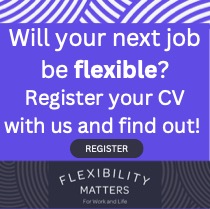Personal injury leads: How to grow your law firm with high-intent clients
In a saturated legal market, one thing sets successful firms apart: consistent access to personal injury leads. Whether you’re a solo attorney or part of extensive practice, high-quality leads are the lifeblood of any personal injury firm. But not all leads are created equal. The key is attracting and converting individuals who need your services, and that’s where innovative personal injury lead generation strategies come in.
This guide will explore how to get more leads, what makes a lead valuable, and why targeting auto accident leads, car accident leads, and even MVA leads can drastically improve your case pipeline.
What are personal injury leads?
Personal injury leads are potential clients who have been hurt in incidents like auto accidents, slips and falls, workplace injuries, or medical malpractice, and who are actively seeking legal representation. They’ve either filled out a contact form, called a law firm, or shown interest through online or offline behavior.
These leads can be sourced through:
- Paid advertising
- SEO-optimized websites
- Social media campaigns
- Lead generation companies
- Referrals and partnerships
But the most valuable leads are exclusive, qualified, and high intent, meaning they’re seeking help now.
Why personal injury lead generation matters
Lead generation isn’t just a numbers game, it’s about targeting the right people at the right time. With strong personal injury lead generation, you’re not just attracting visitors to your website. You’re drawing in real people who’ve experienced trauma and are looking for a lawyer they can trust.
Done right, lead generation helps you:
- Build a reliable client pipeline
- Lower your cost per acquisition
- Increase revenue without increasing staff
- Improve your brand reputation and digital presence
In short, it’s the backbone of a scalable personal injury practice.
How to generate high-quality personal injury leads
Here’s how top-performing law firms generate personal injury leads for attorneys that consistently convert.
1. SEO and Content Marketing
When someone Googles “personal injury lawyer near me,” your website should be there. Focus your content around high-intent keywords like:
- “Auto accident attorney [city]”
- “Car crash injury lawyer”
- “What to do after an accident”
Consistent blogging, optimized landing pages, and local SEO are key to ranking in organic search results.
2. Pay-Per-Click (PPC) Advertising
PPC campaigns on Google and Bing are a fast way to capture auto accident leads from people actively searching for help. Use targeted keywords, compelling ad copy, and strong landing pages to maximize ROI.
3. Google Local Services Ads
LSAs appear at the very top of local search results. They’re ideal for urgent cases like MVA leads (motor vehicle accidents) because they let you pay per lead, not per click. Plus, they display reviews and badges that boost credibility.
4. Lead Generation Companies
Working with a personal injury lead generation company can make sense if you want speed and volume, especially when your in-house marketing is limited. Just be sure to ask:
- Are the leads exclusive or shared?
- Are they screened or pre-qualified?
- What’s the return policy for bad leads?
Reputable vendors can deliver exclusive personal injury leads that are ready to convert.
The power of auto accident and car accident leads
Car crashes remain the top source of personal injury cases in the U.S. That’s why auto accident leads and car accident leads dominate this space. These cases often have:
- Clear liability
- Strong insurance involvement
- Higher potential settlements
By targeting these leads through ads, SEO, or partnerships, you’re tapping into one of the most profitable segments in the personal injury niche.
Understanding MVA leads
MVA leads specifically refer to motor vehicle accident victims. These are often tied to police reports, medical documentation, or insurance claims. They’re highly valuable because they usually involve:
- Medical injuries (from whiplash to fractures)
- Property damage (vehicles, personal items)
- Emotional trauma (pain, suffering, PTSD)
Whether buying or generating these leads in-house, they should be prioritized in your pipeline strategy.
Qualifying a good personal injury lead
Not every form submission is gold. A qualified personal injury lead typically meets these criteria:
- The incident occurred within your state or jurisdiction
- They have not retained another lawyer
- They’ve suffered a legitimate injury
- Someone else’s negligence caused the injury
- They are willing to pursue legal action
Screen your leads with intake forms, quick follow-up calls, or pre-qualification scripts to separate tire-kickers from real clients.
Many injury victims may not know how to evaluate or find the right legal help. In fact, public resources like USA.gov’s legal aid directory are often used by people looking for assistance before reaching out to attorneys directly. This reinforces the importance of positioning your firm as both visible and accessible during that crucial search phase.
Tips for converting more personal injury leads
- Respond fast – Your odds of converting a lead drop by 80% if you wait more than 5 minutes to reply.
- Use intake software – Automate lead capture, appointment scheduling, and follow-ups.
- Educate the client – Provide free resources (like “What to Expect in a Car Accident Case”) to build trust.
- Be empathetic – Remember, these people are hurt, confused, and overwhelmed. Speak human, not legalese.
Grow your personal injury leads
Personal injury leads are the fuel behind every successful law firm. But not just any leads, you want high-quality, intent-driven prospects actively seeking help and ready to sign.
Whether you’re focused on auto accident leads, car accident leads, or targeting more specialized MVA leads, smart personal injury lead generation can transform your firm’s growth. Combine proven marketing tactics with a client-centered approach, and your calendar will be booked solid with cases that count.




